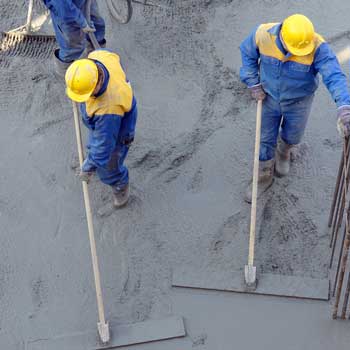If someone works in construction, it means they are a construction worker, right?
Well, yes. But it also means so much more than that.
“Construction worker” is a common catch-all term that can be used to group up any individual who has a job in the construction industry, especially those who work out in the field. But thanks to some negative stereotypes about the industry and its employees, the term often falls short of representing the skill of these workers and the respect they deserve.
For most people outside of the industry, hearing the term “construction worker” conjures up a familiar image: A man, dressed in a bright vest and a yellow hard hat, chipping away at the cement with a jackhammer or moving heavy materials around a dusty construction site.
For most people, the only real glimpse they get of construction workers is driving by them at reduced speeds flanked by orange barricades on a busy road under renovation, or maybe flashes of them through a mesh-covered fence while walking down the sidewalk. Besides that, most of what they know about construction workers is established through movies and TV shows, where they are often portrayed in a negative light.
Common stereotypes of construction workers include:

Those are some of the stereotypes of the people who are labeled “construction workers.”
But when you break down that broad group of construction workers into the individual crafts and careers that fit under that umbrella, suddenly the connotations and associations start to shift.
What types of traits pop into your head when you hear terms like these?
Likely, the ideas around these words is much more positive. When we see the actual name of the craft, we have a much clearer picture of what types of tasks an individual does for their career. We know that carpenters cut and shape wood and work on a variety of projects; we know that electricians work with wiring and power systems; we know that equipment operators control large machinery like excavators and bulldozers.
With that clearer picture of day-to-day responsibilities, other aspects of these professions are also more apparent. We understand better what skills, experience and expertise are needed to execute those tasks. We can imagine their particular role on a job site and how much they get paid for it. We realize how much training and education is required to do the job correctly and safely.
With just a slight change in phrasing, the perspective and perceptions of people who work in construction can change drastically.

It’s not wrong to use the term “construction worker” to refer to people who work in the construction industry or field.
However, it’s important to think about what we associate with the words we use.
The construction industry is facing a growing shortage of skilled professionals – there is more demand for work than there are people who are able to do it. And a major reason for that is the negative perceptions and stereotypes that are very often inaccurate or archaic. In spite of these image issues, there are many great career opportunities in the building crafts and plenty of benefits to pursuing a career in construction. As a critical and essential industry in the United States and worldwide, it’s important that we represent the dignity and potential of the construction career path in the way it should be.
As we work to change the associations of terminology like “construction worker,” consider other words and phrases that better signify careers in construction. “Craftsman,” “craftswoman,” and “craft professional” are all positive general choices that better convey the skill and knowledge in developing and building things with one’s hands. Using the specific career or craft of an individual is also a great way to better depict their profession.
Want to learn more about working in construction? Check out a variety of topics in BYF’s Discover More Blog.